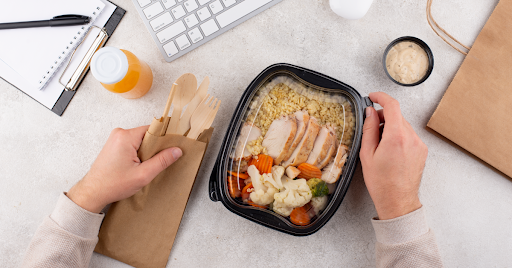
Business travel can feel like a free pass to break your routine, primarily when someone else is covering the tab. But here’s a question: do you want to come back feeling sluggish and out of sync? Sure, the airport snacks and fancy client dinners are tempting, but what if you could enjoy the trip and stay healthy?
Imagine fueling your body with nutritious choices that energize you for long meetings and jet-setting schedules. Sounds great, doesn’t it? With some planning and a focus on balance, you can turn your business travel diet into opportunities to thrive.
Read ahead to know how to eat smart on the go.
Tips to Ensure a Healthy Diet While Traveling
1. Pack Your Snacks
Packing your snacks can help you dodge unhealthy temptations while on the go. Airports, meetings, and long commutes often leave limited options, so being prepared is vital. The best diet for business travelers helps maintain energy without overindulging.
A small stash of nuts, seeds, dried fruit, or low-sugar protein bars can save the day. Instant oatmeal is another excellent choice for a quick and nutritious start. Having these on hand can also help you avoid last-minute junk food grabs.
2. Stick to Your Healthy Habits
Maintaining a healthy business travel diet during business travel can be tricky, especially when your company is footing the bill. It’s tempting to indulge in an appetizer, a rich main course, and maybe even dessert. But staying mindful of your habits at home can help you stay on track.
A good rule of thumb is to load up on veggies and pair them with lean protein. This approach keeps you feeling satisfied and energized.
3. Stay Hydrated
Hydration is another aspect that’s easy to overlook when traveling. Flights, long days, and frequent coffee runs can dehydrate you without you even realizing it. Carry a reusable water bottle and habitually fill it up throughout the day.
If you’re craving variety, opt for herbal teas or infused water. Limit your caffeine and alcohol intake in your business travel diet, as they can dehydrate you further.
4. Choose Wisely at Restaurants
When dining out, the key is balance. Restaurants often serve larger portions than you’re used to, so try to eat mindfully. Focus on lean proteins like grilled chicken, fish, or tofu, and pair them with plenty of veggies.
Skip heavy, creamy sauces and ask for dressings on the side. If the menu has whole grains like brown rice or quinoa, go for them over white bread or pasta. Eating out doesn’t have to derail your healthy eating habits.
5. Prioritize a Nutritious Breakfast
Starting your day with a nutritious breakfast sets the tone for healthier daily choices. The best diet for business travelers includes healthy meals. If your hotel offers a breakfast buffet, stick to options like scrambled eggs, whole-grain toast, oatmeal, or Greek yogurt with nuts and fruit. Avoid sugary pastries and processed meats in your business travel diet. They might give you a quick energy spike but leave you feeling sluggish later.
6. Plan for Airports
Airports are often packed with tempting but unhealthy food options. The trick is to plan and be selective. Look for fresh fruit stands, salad bars, or places that serve grilled items instead of fried foods.
Smoothies or yogurt parfaits can be a great grab-and-go option if you’re in a rush. When in doubt, rely on your packed healthy snacks to avoid impulse buys.
7. Stay Active
While not directly about food, staying active helps you maintain a healthy routine. Take advantage of hotel gyms or take a quick walk around the area. Stretching or doing yoga in your hotel room can also help you feel more balanced and energized. Besides, staying active often inspires better food choices throughout the day.
8. Adjust to Local Time Zones
Time zone changes can interrupt your eating schedule, leading to odd cravings or late-night meals. To counter this, focus on eating smaller, frequent meals to steady your energy. Avoid heavy meals right before bed, as they can affect your sleep. Light, nutrient-rich foods like soups, salads, and fruits in your business travel diet can help your body adjust to the new time zone.
9. Indulge in Moderation
It’s natural to want to treat yourself occasionally, especially when you’re traveling. The key is moderation. Enjoy a small portion of their signature dish if you’re visiting a restaurant known for its specialties. Savoring indulgences without overdoing it lets you experience local flavors without compromising your health.
10. Don’t Indulge in Liquid Calories
It’s easy to consume extra calories without realizing it, primarily through beverages. Sugary sodas, energy drinks, and fancy coffee shop orders can quickly add up, leaving you with unnecessary sugar intake and no nutrition. If you want something more exciting, try infused water with slices of lemon, cucumber, or berries for flavor.
When it comes to alcohol, moderation is key. Cocktails and mixed drinks are often packed with sugar, so if you choose to drink, opt for simpler choices like a glass of wine or a light beer. Avoiding calorie-laden beverages in your business travel diet keeps you on track without feeling deprived.
11. Recover When You’re Back
Once your trip is over, take steps to reset your routine. Get back to eating your usual balanced meals, including detox-friendly foods like leafy greens and lemon water. Staying hydrated and getting plenty of rest can also help you recover quickly from travel fatigue. Returning to your normal habits will prevent your business travel from affecting your long-term health.
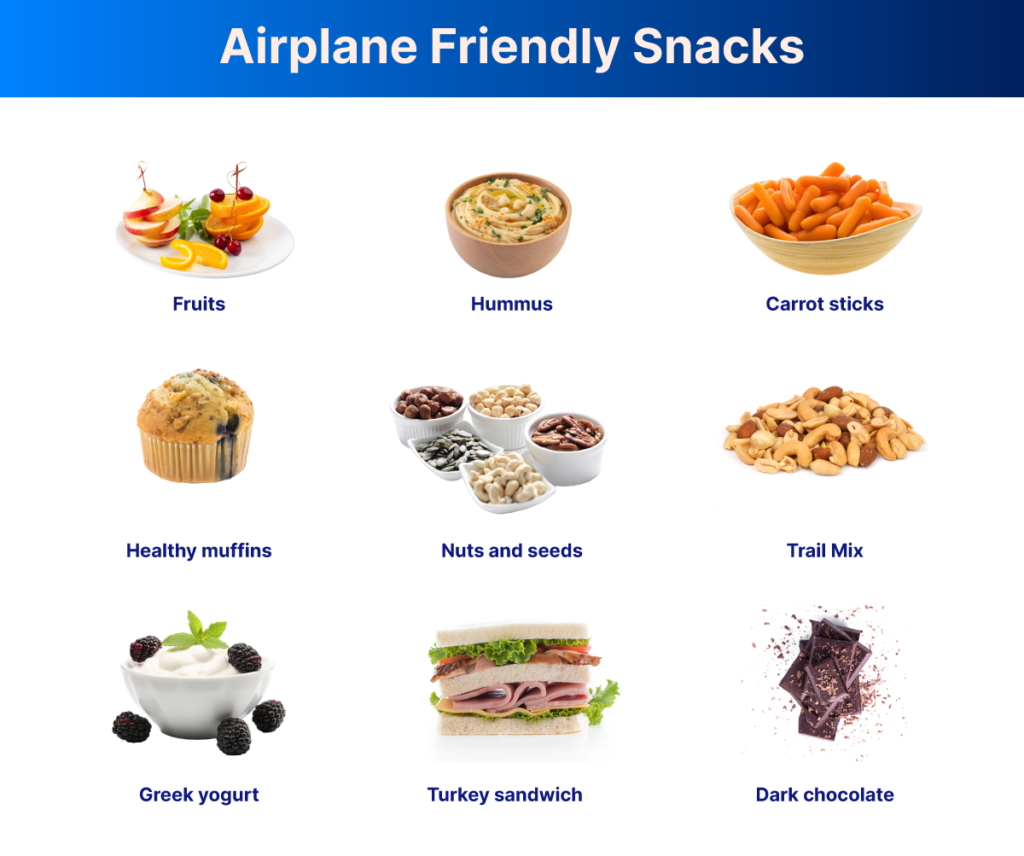
Sample Best Diet for Business Travelers (~2000 cals)
1. Breakfast (400 Calories)
Option 1 (Hotel Buffet):
- Scrambled eggs (2 large) – 140 calories
- Whole-grain toast (1 slice) with avocado spread (1 tbsp) – 120 calories
- Fresh fruit salad (1 cup) – 60 calories
- Black coffee or herbal tea – 0 calories
Option 2 (Grab-and-Go):
- Greek yogurt (non-fat, plain, 6 oz) topped with granola (¼ cup) and blueberries (¼ cup) – 200 calories
- Banana – 105 calories
- Small almond milk latte – 90 calories
2. Morning Snack (150 Calories)
Option 1
- Handful of mixed nuts (1 oz) – 150 calories
Option 2
- Low-sugar protein bar – 140-160 calories
3. Lunch (600 Calories)
Option 1 (Restaurant Meal):
- Grilled chicken Caesar salad (dressing on the side, no croutons) – 450 calories
- Sparkling water with lemon – 0 calories
- Dark chocolate square (1 piece) – 50 calories
Option 2 (Quick Order):
- Turkey sandwich on whole-grain bread with mustard, lettuce, and tomato – 350 calories
- Side of baby carrots (1 cup) – 50 calories
- Fresh apple – 100 calories
4. Afternoon Snack ( 150 Calories)
Option 1
- String cheese (1 stick) with a small handful of grapes (1/2 cup) – 150 calories
Option 2
- Rice cakes (2 plain) with almond butter (1 tbsp) – 150 calories
5. Dinner (700 Calories)
Option 1 (Dining Out):
- Grilled salmon (6 oz) – 250 calories
- Steamed broccoli (1 cup) – 55 calories
- Quinoa (1/2 cup) – 110 calories
- Small side salad with olive oil and balsamic vinegar – 150 calories
- Unsweetened iced tea – 0 calories
Option 2 (Room Service or Prepared Meal):
- Grilled chicken breast (6 oz) – 280 calories
- Brown rice (1/2 cup) – 110 calories
- Roasted asparagus (1 cup) – 60 calories
- Dark chocolate (2 squares) – 100 calories
6. Evening Snack (100 Calories)
Option 1
- Plain popcorn (air-popped, 3 cups) – 100 calories
Option 2
- Unsweetened Greek yogurt (4 oz) with a drizzle of honey (1 tsp) – 100 calories
Organize Your Business Travel and Decrease Stress with itilite
Maintaining a healthy business travel diet isn’t just about staying fit—it’s about staying sharp and productive too. By planning your meals, avoiding unnecessary liquid calories, and making smart choices at restaurants, you can enjoy delicious food and great health.
And when it comes to managing your travel itinerary seamlessly, itilite travel management software has your back. With its user-friendly interface and vast booking options, itilite simplifies travel planning, so you can focus on what matters most.
Book a free demo with us to know more!



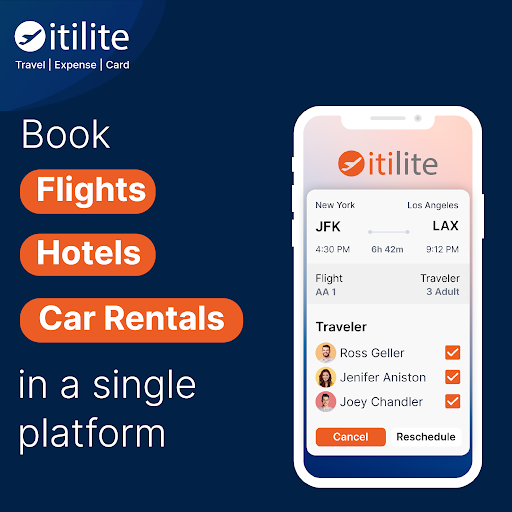




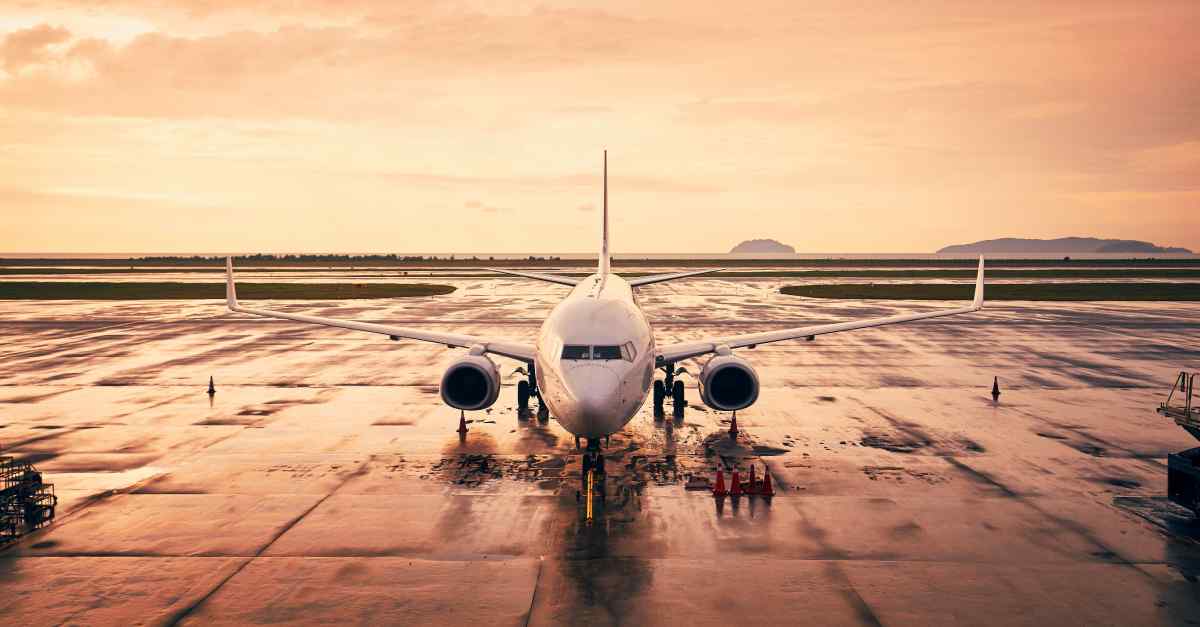
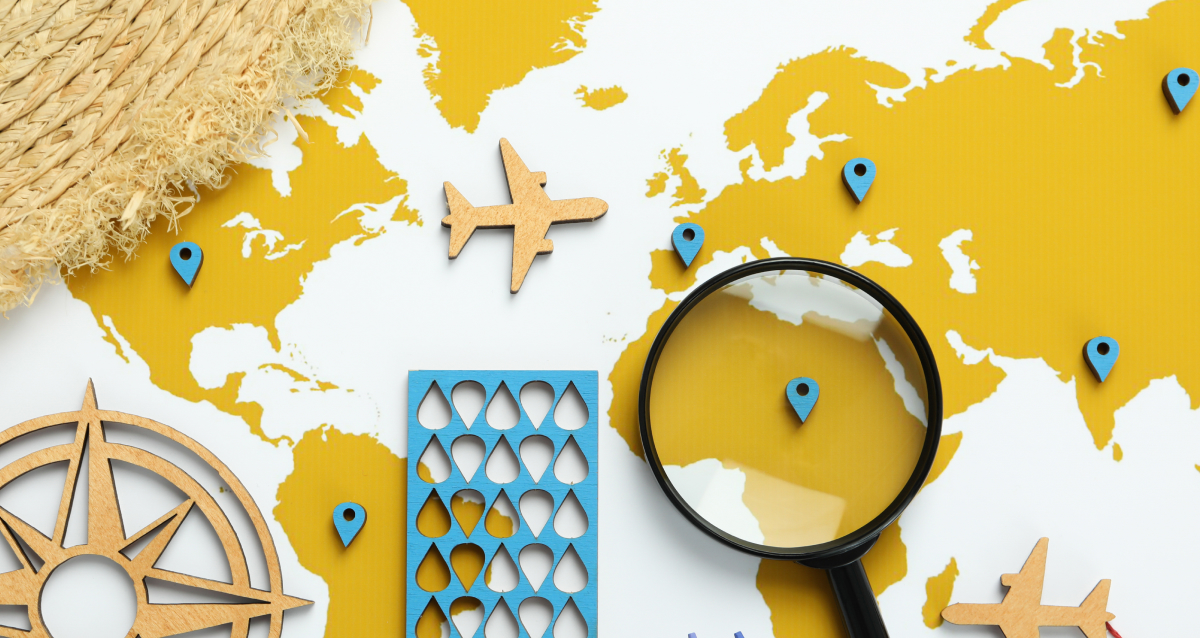





 and then
and then